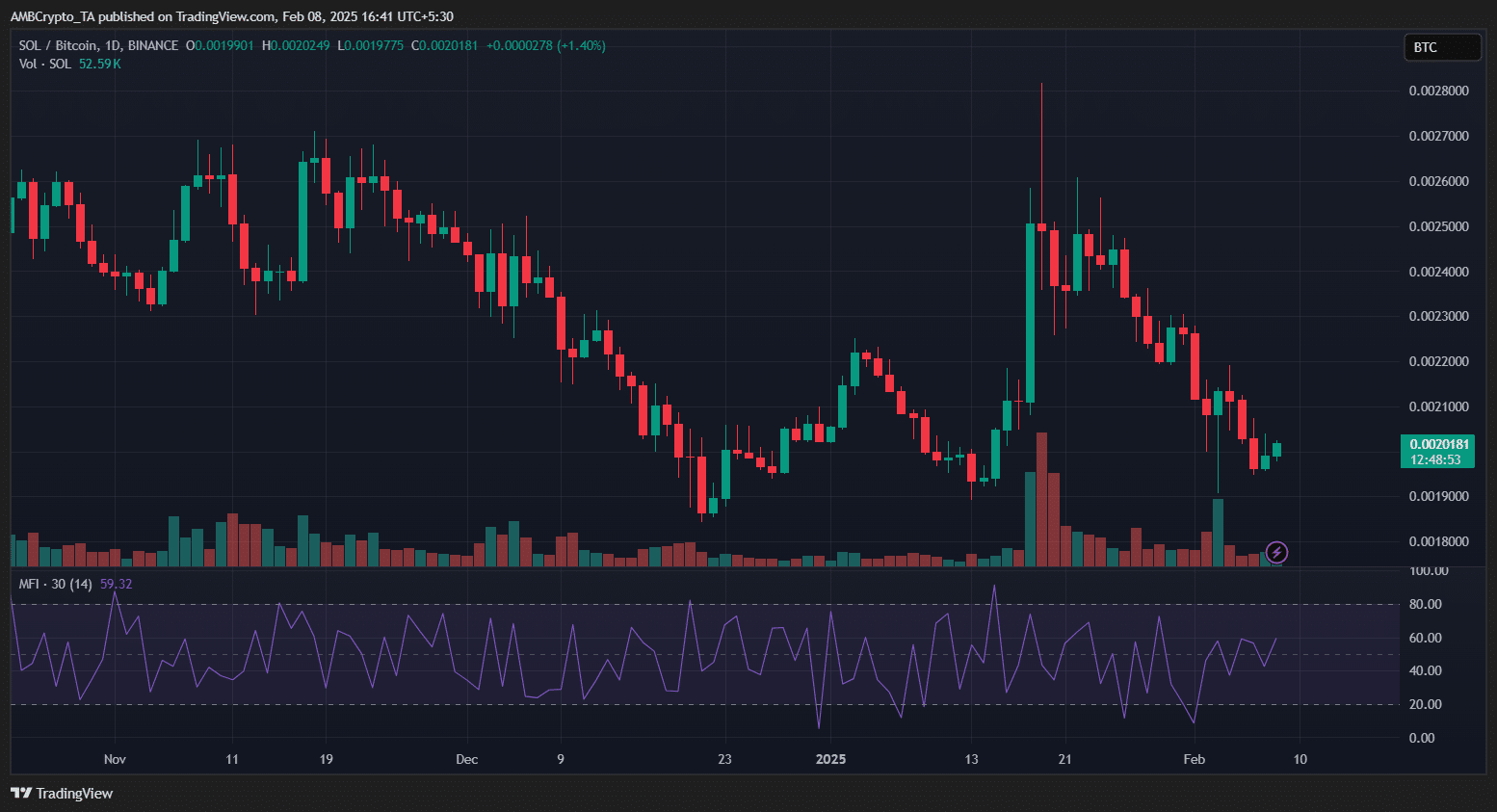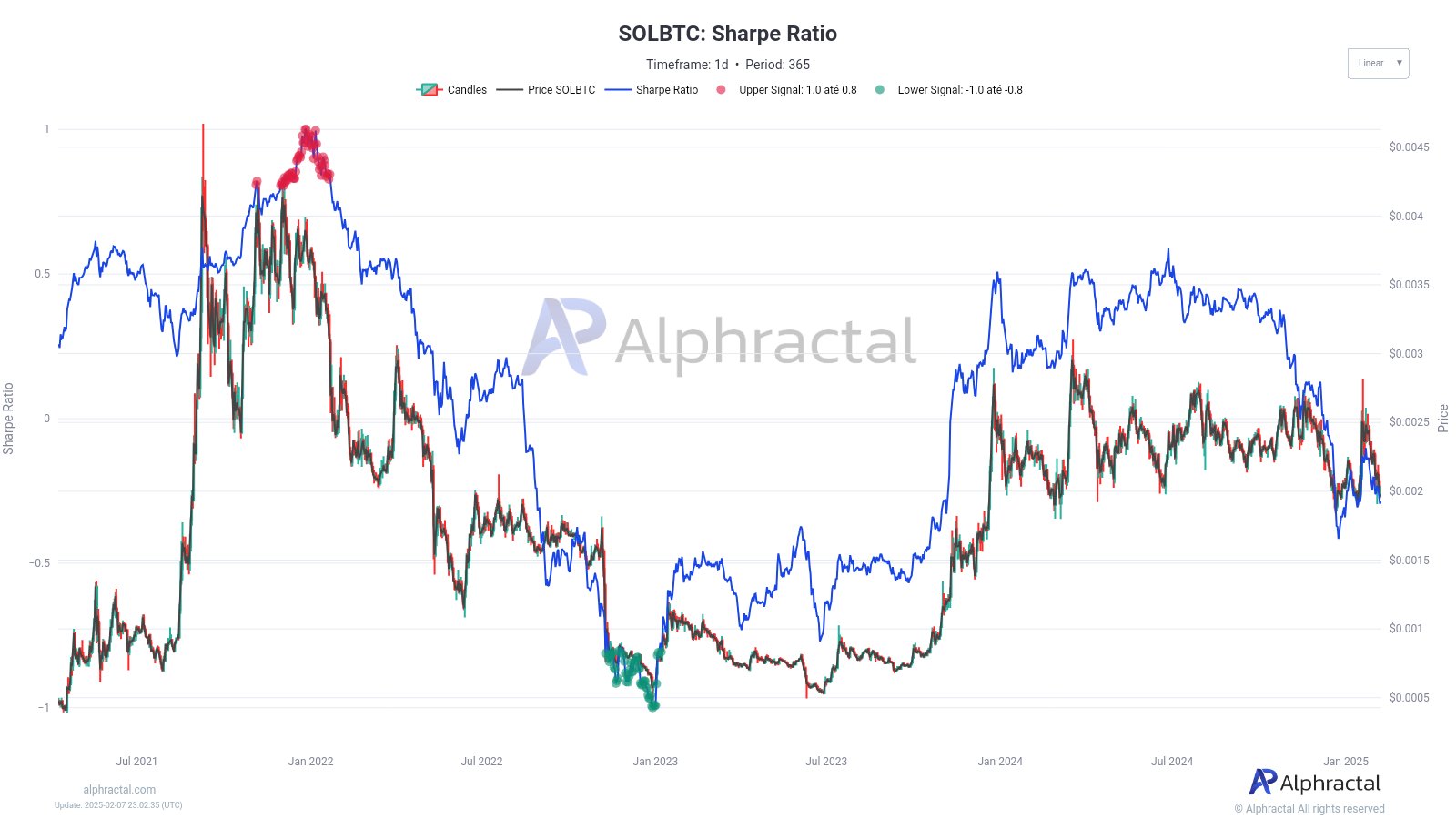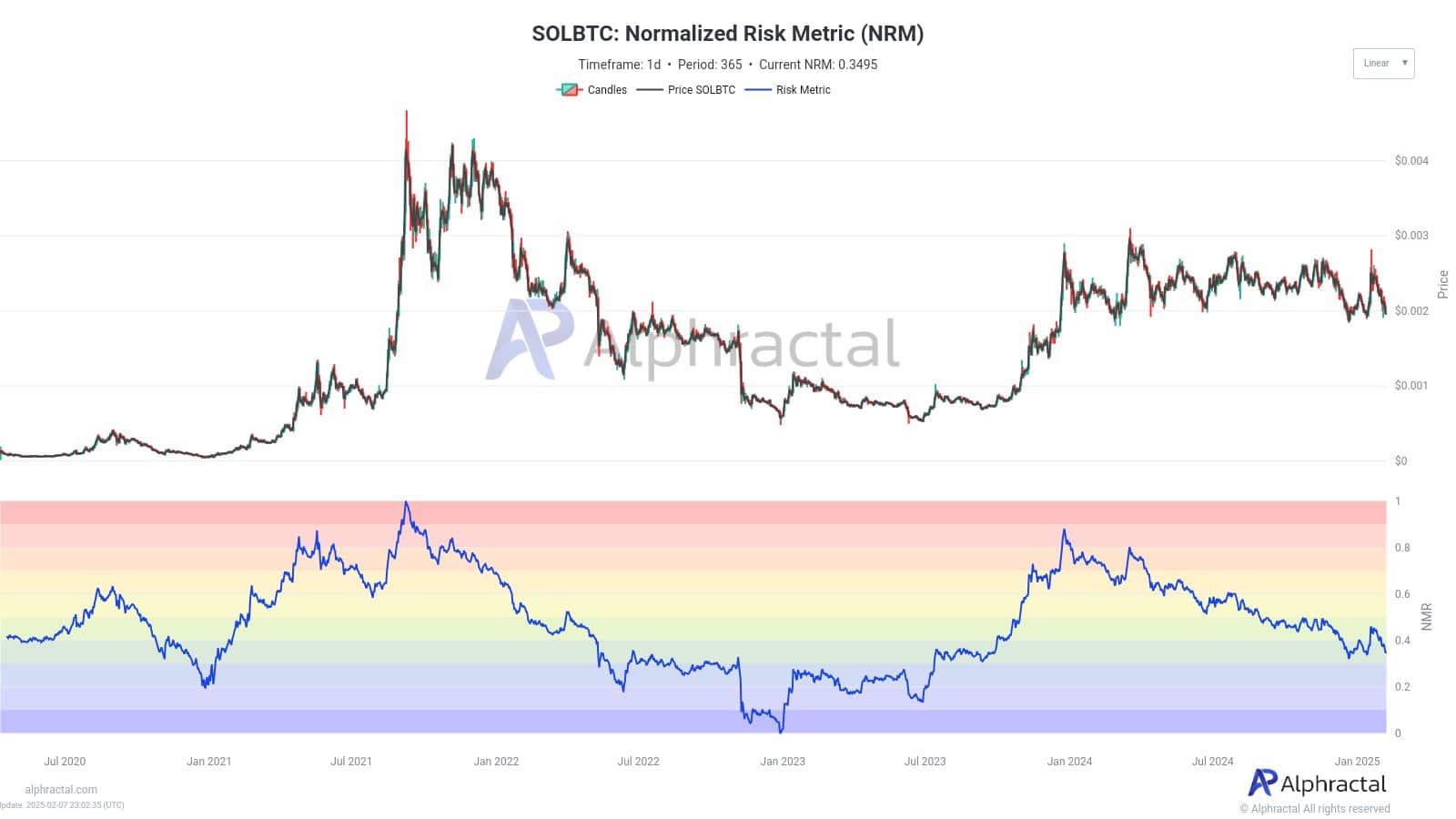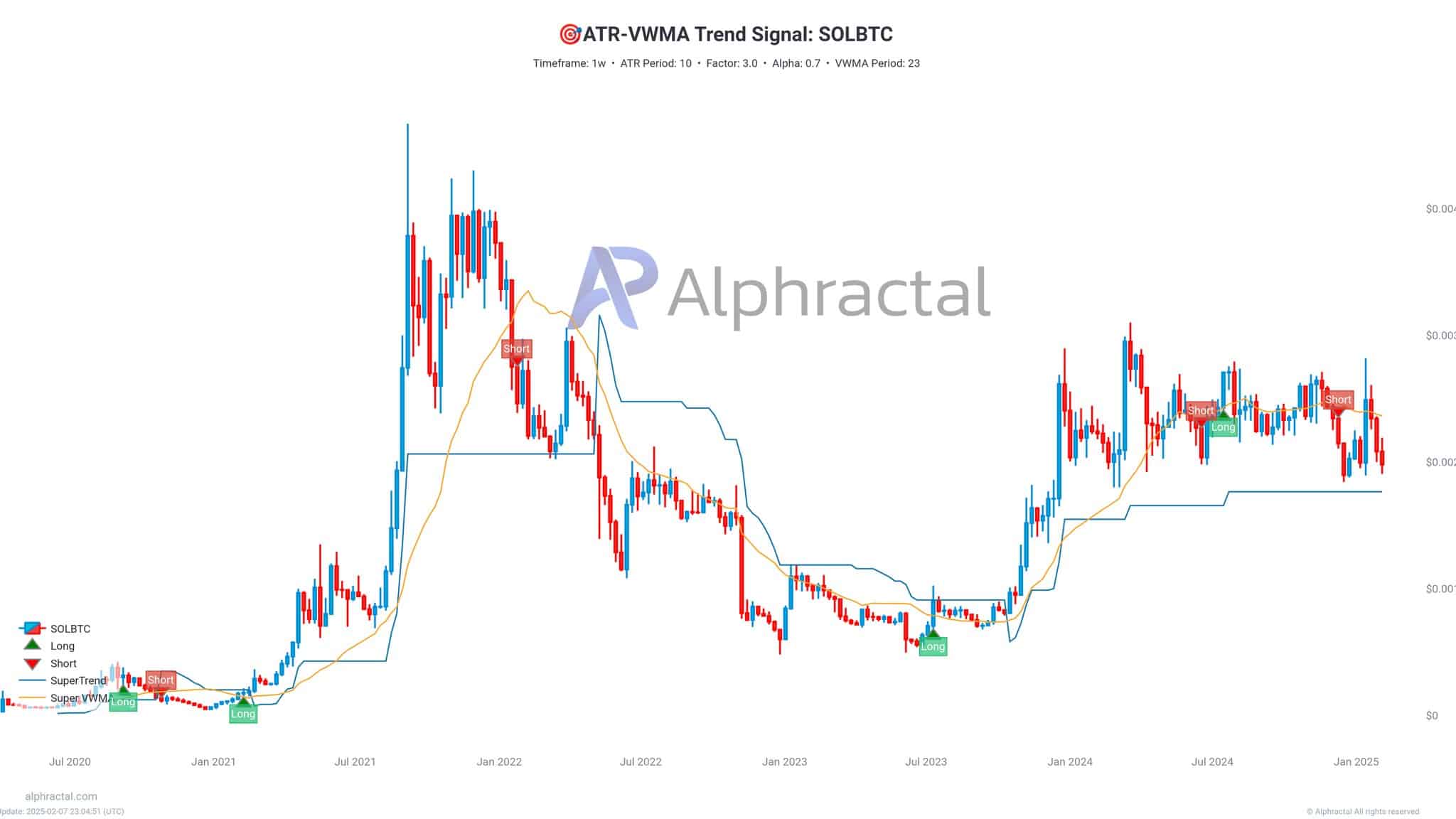-
As Solana’s performance wanes against Bitcoin, critical metrics hint at a potential shakeup in the altcoin’s prospects.
-
Recent analysis indicates that the SOL/BTC pair is experiencing a clear downtrend, paralleling broader market conditions, raising concerns among investors.
-
“Historical patterns suggest that unless Solana can reverse current market sentiments, it may continue to lag behind Bitcoin,” noted a source from COINOTAG.
Explore how Solana’s SOL/BTC dynamics might signal a shift in demand as key metrics reveal growing concerns for investors.
Current Trends in SOL/BTC Market Dynamics
The current state of the SOL/BTC trading pair indicates a pronounced decline, prompted by market volatility and declining trading activity. Since mid-January 2025, the pair has retreated from a peak of 0.0024 BTC to approximately 0.0020 BTC as of now. This trend reflects decreasing demand for Solana relative to Bitcoin amidst increasing selling pressure.
Moreover, trading volumes have diminished, suggesting that investor interest in Solana might be waning, which exacerbates the downward pressure on prices.

Source: TradingView
Historically, spikes in performance for Solana were indicative of market rallies. However, today’s landscape presents a stark contrast, with poor price action coinciding with hints of market corrections.
Despite pressures, the Money Flow Index (MFI) shows signs of life after a recent uptick, hinting at possible short-term recovery as cautious buyers re-enter the market.
Analyzing Sharpe Ratio for Better Insight
The assessment of the Sharpe Ratio for the SOL/BTC trading pair reveals critical insights into the asset’s risk-adjusted performance. Recent data indicates that higher peaks in the Sharpe Ratio historically correlate with significant price increases, as observed in both mid-2021 and mid-2023.
However, volatility markers have risen sharply, with declines in the Sharpe Ratio often aligning with downside moves. At present, the Sharpe Ratio hovers in the negative or neutral zone, signaling reduced performance against Bitcoin.

Source: Alphractal
The current bleak performance backdrop underscores caution among investors reluctant to make significant allocations to Solana during periods marked by uncertainty.
Market Trends and Risk Assessment via NRM
The Normalized Risk Metric (NRM) adds an additional layer of analysis, oscillating between risk levels. High values signal heightened risk, while lower readings indicate a more favorable risk-reward outlook.

Source: Alphractal
Traditionally, previous price surges have coincided with elevated NRM levels, reflecting periods of market euphoria. Conversely, lower readings signal potential accumulation phases. Currently, the NRM sits within a mid-range, suggesting a market that is neither overly speculative nor excessively cautious.
Comparative Analysis: SOL/BTC vs. ETH/BTC
When comparing SOL/BTC with ETH/BTC, significant divergences are evident in volatility and trading behavior. Ethereum’s performance typically acts as a benchmark for the altcoin market’s health, while Solana displays higher fluctuations characteristic of its speculative nature.
This volatility highlights the risk-return profile that Solana carries, with Ethereum generally providing greater stability, appealing more to institutional investors. Ethereum has demonstrated better endurance regarding support levels compared to Solana’s periodic swings that often lead to rapid changes in market sentiment driven by whale actions.
Understanding Market Momentum and Strategies

Source: Alphractal
The Average True Range (ATR) serves as an indicator of market activity, while the Volume-Weighted Moving Average (VWMA) offers direction on price trends. Traders remain focused on “Long” and “Short” signals for optimal trade planning in highly volatile environments.
2021’s rapid price increases were coupled with high ATR readings, whereas bearish trends characterized 2022’s activity. Current activity along the VWMA reflects uncertainty, with traders needing to either brace for volatile conditions or seek strategic entry and exit points.
Conclusion
The intricate analysis of Solana against Bitcoin indicates several challenges lying ahead. Key metrics such as the Sharpe Ratio and Normalized Risk Metric showcase the shifting dynamics of demand. As the blockchain industry evolves, investors should closely monitor market indicators and adjust their strategies to mitigate risk and leverage potential opportunities.
